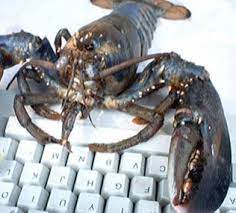Educational / Recruitment Info
Education & Recruitment Information.docx
Generic Clearance for Citizen Science and Crowdsourcing Projects
Educational / Recruitment Info
OMB: 0648-0828
Environmental Monitors on Lobster Traps and Large Trawlers
(eMOLT)
M ore
than one hundred commercial fishing vessels on the Northeast Shelf
now have oceanographic sensors installed on their fixed and mobile
gear. Some have experimented with tide gauges, acoustic listening
devices, cameras, satellite-tracked drifters, current meters, and
salinity monitors but the primary focus has been collecting bottom
temperatures.
While some gear are fitted with internally-recording devices that
have returned more than two decades of hourly data from fixed
locations, about half the vessels are fitted with satellite
transmitters so that ~20,000 hauls have reported bottom temperatures
in realtime. In the past year, several vessels are now equipped with
water column profilers to document the vertical stratification of
temperature and a few are collecting records of bottom dissolved
oxygen. The primary goal is to feed the data to both ocean models
and stock assessment models.
ore
than one hundred commercial fishing vessels on the Northeast Shelf
now have oceanographic sensors installed on their fixed and mobile
gear. Some have experimented with tide gauges, acoustic listening
devices, cameras, satellite-tracked drifters, current meters, and
salinity monitors but the primary focus has been collecting bottom
temperatures.
While some gear are fitted with internally-recording devices that
have returned more than two decades of hourly data from fixed
locations, about half the vessels are fitted with satellite
transmitters so that ~20,000 hauls have reported bottom temperatures
in realtime. In the past year, several vessels are now equipped with
water column profilers to document the vertical stratification of
temperature and a few are collecting records of bottom dissolved
oxygen. The primary goal is to feed the data to both ocean models
and stock assessment models.
While the project was initiated at NOAA's Northeast Fisheries Science Center in 2001, the Gulf of Maine Lobster Foundation leads the administration/operations along with several partners. The original NOAA eMOLT page is here.
To see list of vessels with recent observed and modeled bottom temperatures. click here.
To see a map of observations from the last month, click here.
To see a map of observations from the last week and how they compare to historical records, click here.
Funding comes from a variety of sources over many years including:
NOAA's Northeast Consortium
NOAA's Ocean Technology Transition Program
NOAA's Northeast Cooperative Research Branch
NOAA's Integrated Ocean Observing Systems
Mass Technology Collaborative
For more information on the project, how to get involved, and what instruments are used, contact [email protected]
| File Type | application/vnd.openxmlformats-officedocument.wordprocessingml.document |
| Author | Joe.I.Terry |
| File Modified | 0000-00-00 |
| File Created | 2023-11-14 |
© 2025 OMB.report | Privacy Policy